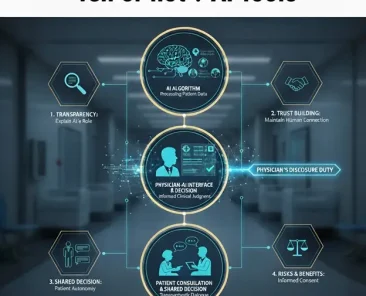Gene therapy costs 30 million, who can afford it?
The three “new payment methods” of pharmaceutical companies, insurance companies, and the medical system are quietly changing the future of healthcare
A gene therapy that can improve life after a single treatment costs NT$30 million to NT$100 million.
This is not science fiction, but the real situation that the United States is facing.
High-cost therapies have given hope to many families with rare diseases, but they have also put unprecedented financial pressure on insurance companies and the healthcare system.
“It’s too expensive to pay all at once, but it’s not okay not to pay.”
This is a common dilemma for all medical payers at present.
In the past three years, three innovative “new payment methods” have emerged in the United States, making high-cost medical care “affordable”.
Include:
1️⃣ Guaranteed payment method (guaranteed efficacy)
2️⃣ Subscription payment method (like subscribing to Netflix)
3️⃣ Performance refund system (refund if ineffective)
These practices are reshaping the medical market and are also seen as new trends and opportunities that Taiwan may face in the future.
1. Pfizer’s “Efficacy Warranty”:
Case Study: Pfizer (Beqvez)
Pfizer’s gene therapy for hemophilia B, Beqvez, is priced at a whopping $350k, and its launch process highlights a structural barrier in the U.S. market: Medicaid’s “Best Price” clause. Traditionally, if a pharmaceutical company refunds directly to commercial insurance for a failed therapy, this “lower net price” can reset the statutory rebate floor for all Medicaid programs, causing a devastating financial blow to the pharmaceutical company.
To mitigate this risk, Pfizer has implemented a “Warranty Model” that operates through third-party insurance.
Operating mechanism:
Instead of entering into a direct refund contract with the payer, Pfizer embeds the “Efficacy Warranty” into the cost of the treatment. If the therapy does not demonstrate the expected efficacy or durability within a specific timeframe, the refund will be paid by the third-party insurance company rather than directly from Pfizer.
Strategic Advantages:
- Regulatory Protection: By externalizing risk, Pfizer successfully decoupled refunds from the unit price of the drug, protecting the best price benchmark for Medicaid.
- Payer Protection: Payers are often reluctant to pay $350k upfront for therapies that may not work. This warranty model effectively transforms changing clinical risks into fixed, insured assets.
- Market Segmentation: In the competitive hemophilia B market, this warranty provides a strong signal of confidence in the product’s efficacy.
2. Cigna Evernorth’s “subscription system”:
Case Study: Cigna Evernorth (Embarc Benefit Protection)
When pharmaceutical companies focus on unit prices, payers, especially self-insured employers, are worried about “thunder risk”. Millions of dollars in gene therapy for a single employee are enough to bankrupt a small and medium-sized company’s health insurance plan. Evernorth, owned by Cigna, addresses this issue with the Embarc Support Protection Program, a typical subscription-based model.
Operating mechanism:
Embarc operates on a “per person monthly” (PMPM) capitation fee model. Employers pay predictable monthly fees with health plans to join the network. In exchange, if a beneficiary needs covered gene therapy, such as Zolgensma or Luxturna, the cost will be fully absorbed by the Embarc program.
Clinical and Financial ROI:
- Zero Out-of-Pocket: At the heart of this patient support program is the elimination of financial toxicity for patients. By removing deductible barriers, it ensures that financial factors do not delay treatment, optimizing clinical outcomes.
- Budget smoothing: For CFOs and HR and benefits managers, this translates the risk of volatile and catastrophic capital expenditures (CapEx) into predictable operating expenses (OpEx).
- Improved Accessibility: When the payer (Embarc) has resolved the cost issue at the actuarial level, physicians will encounter less resistance when conducting prior authorization, simplifying the patient’s journey from diagnosis to receiving the infusion.
3. Bluebird Bio:
Case Study: Bluebird Bio (Zynteglo)
Bluebird Bio’s Zynteglo, a gene therapy for β-thalassemia, is priced at $280K and faces unique challenges. The clinical goal of this therapy is to “wean patients from transfusion dependence”. Considering that the cost of lifetime blood transfusions and iron removal therapy for patients may exceed $600, the drug is cost-effective – but only if it is “permanently effective”.
Bluebird Bio has launched a high-stakes “Outcome-Based Refund Model”.
Operating mechanism:
The company contracted with payers to promise Bluebird Bio to refund up to 80% of treatment costs if patients failed to remain off the transfusion within two years of receiving the infusion.
Strategic implications:
- Quantitative confidence: With $224M (80% of $280) at risk per patient, it’s the pharmaceutical company’s strongest marketing signal for clinical efficacy. It bridges the trust gap between clinical trial data and real-world evidence (RWE).
- ROI for the payer: This model directly addresses the anxiety of insurance companies that “pray after paying works.” It aligns pharmaceutical companies’ financial incentives with the clinical goals of physicians and patients.
- Data Infrastructure: To implement this model, robust patient onboarding and monitoring systems must be established to track transfusion events. This forces providers, payers, and pharmaceutical companies to integrate more closely to transform a single drug sale into a long-term patient management ecosystem.
Common trends behind the three patterns:
“Medical effect” and “cash flow design” are tied together**
In the era of gene therapy, clinical value and financial mechanisms are inseparable.
This means:
- In the future, drug launches need to design a cash flow model simultaneously
- Hospitals should be able to track the efficacy
- There should be a patient database and digital tracking suitable for reimbursement
- Payers need new write-off, review, and actuarial tools
Without this infrastructure, no matter how good the treatment is, it may “cure the disease, but it cannot be paid.”
PatientsForce has launched a variety of new payment models for medical finance in Taiwan, from bank financing, personal loans, drug installment and pharmaceutical company debt risk sharing models, and is constantly developing medical finance for new patients.
#價值導向醫療 #基因療法 #市場准入 #醫療財務 #精準醫療 #醫藥創新 #病患體驗




